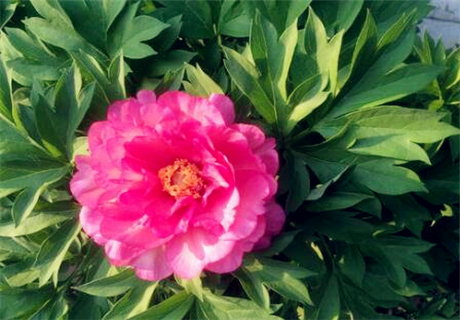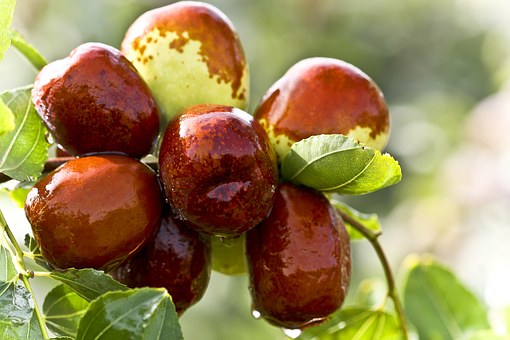Annual plant cowpea yield more than 4000 jin per mu! How to plant in order to achieve high yield? What are the planting prospects?
Cowpeas, commonly known as carob beans, ginger beans, with beans, hanging beans. Generally speaking, it is the best time to eat cowpea from June to September. So how many jin can one mu of cowpea grow? How to plant it? What are the planting prospects?
1. Main varieties of cowpea
Cowpea can be divided into vine type and dwarf type according to its stem growth habits.
The main results are as follows: 1. The lateral vines of the trailing type all grow infinitely, and the height of the main vine is 3-5m, which is left-handed, so it is necessary to set up a support during cultivation. Lateral branches and inflorescences can be drawn between leaf axils, blossom and bear pods one after another, the growing period is long and the yield is high.
2. After 4-8 nodes, the main stem of dwarf type is capped with flower bud, the stem is erect, the plant is short, the plant height is 40-50cm, and there are many branches. The growth period is short, the maturity is early, the harvest time is short and concentrated, and the yield is low.
Second, how to grow cowpeas?
1. Seedling of cowpea in early stage.
Cowpea is easy to sprout and generally does not need seed soaking to promote budding. The soil at the bottom of the seedling bed should be tight, and the thick loam soil with 6cm is the best, so as to prevent the main root from going deep into the soil, multiple fibrous roots, and great damage to the root group when transplanting seedlings. Therefore, when the seedlings have a pair of true leaves, they can be transplanted with soil, not large seedlings. If possible, two or three seedlings can be raised in nutrition bowls or burrow plates.

2. It is best to plant cowpea when planting.
After frost breaking, the seedling age is 20-25 days, and the planting field should apply more rotten organic fertilizer, 3000-5000kg per mu, 25-30kg of superphosphate, 50-100kg of plant ash or 10-20kg of potassium sulfate, planting density row spacing 66cm, hole spacing 10-20cm, 3000-3500 holes per mu, two or three plants per hole (two or three seedlings can be used when raising seedlings to facilitate later planting). After planting, slow seedling water was irrigated, and squatting seedlings were ploughed deeply for 5-8 days to promote root development.
3. Sowing method of cowpea
After frosting, the density of trailing varieties was 66-70cm, 20-25cm, 4-5 seeds per hole, 2-3 seedlings, 50-60cm and 25-30cm, respectively. After sowing, use feet to make full contact between the soil and seeds, absorb enough water to facilitate sprouting, when there is 70% bud top soil, gently water once to ensure the emergence of seedlings. After watering, deep ploughing to preserve soil moisture, increase temperature and squat seedlings in time to promote root growth.
4. Field management method in the later stage of cowpea horn.
(4.1) check seedlings and replenish seedlings: when the first pair of primary leaves appear, they should go to the field to check seedlings one by one. It is best to use paper bowls to sow and raise seedlings 3-4 days earlier in the greenhouse. If the seedlings are raised and transplanted, the seedlings should be replenished after the slow seedling.
(4.2) Intermediate ploughing and loosening soil: intertillage was carried out every 7-10 days after seedlings came out or slow seedlings were planted during direct seeding, soil moisture was loosened, roots were promoted by squatting seedlings, and intertillage was stopped after vine extension.
(4.3) watering and topdressing: cowpea should not be fertilized in the early stage to prevent overgrowth caused by too much fertilizer and water. Dung is usually watered once after a live tree. It is necessary to strengthen the supply of fertilizer and water after bud flowering and the beginning of harvest, generally topdressing 2-3 times, applying 750-1000kg per mu of human and animal manure.
5. Prevention and control of cowpea disease
The main disease of cowpea is rust. In the early stage of the disease, the lesion should be removed or cut off in time to destroy it. 50% carbendazim 500 times solution can be selected for pesticide control. Pests of cowpea include cowpea pod borer and aphids. Borers choose fenitrothion, aphids can use dimethoate, spray according to the marked usage and dosage, once a week.
Third, what are the prospects for cowpea planting?
Many farmers also choose to grow cowpeas to get rich and increase their income. There are many varieties of cowpea, such as Fengchen No.2 and Xiabao, with an average yield of more than 4000 jin per mu. So the planting prospect is good.
Time: 2019-03-15 Click:
- Prev

Flower phase peony root how to plant? When is the best time to plant? What are the planting prospects? How much is the cost of one mu of land? (attached
Paeonia lactiflora has a long history of cultivation in China and belongs to one of the traditional famous flowers. Peony is called the king of flowers, and peony is called flower appearance. Peony is a famous ornamental flower, which is widely planted in the garden. So how to plant Paeonia lactiflora? When is the best time to plant? What are the planting prospects? How much does it cost to invest an acre of land?
- Next

How much is the price of "Baiguo King" winter jujube seedlings? What varieties should be planted from 2018 to 2020? How to grow the benefit
Winter jujube, also known as apple jujube and wild goose jujube, is a kind of fruit ripe on the market in October of the Gregorian calendar. It is deeply loved by people because of its sweet and delicious taste and rich nutritional value. At present, it is planted in most areas, but if you want to plant winter jujube well, you must choose good saplings.
Related
- Fuxing push coffee new agricultural production and marketing class: lack of small-scale processing plants
- Jujube rice field leisure farm deep ploughing Yilan for five years to create a space for organic food and play
- Nongyu Farm-A trial of organic papaya for brave women with advanced technology
- Four points for attention in the prevention and control of diseases and insect pests of edible fungi
- How to add nutrient solution to Edible Fungi
- Is there any good way to control edible fungus mites?
- Open Inoculation Technology of Edible Fungi
- Is there any clever way to use fertilizer for edible fungus in winter?
- What agents are used to kill the pathogens of edible fungi in the mushroom shed?
- Rapid drying of Edible Fungi

